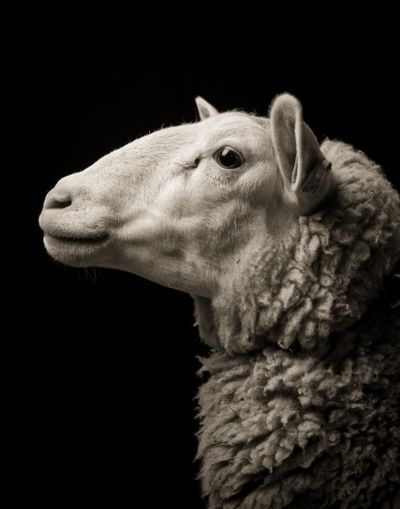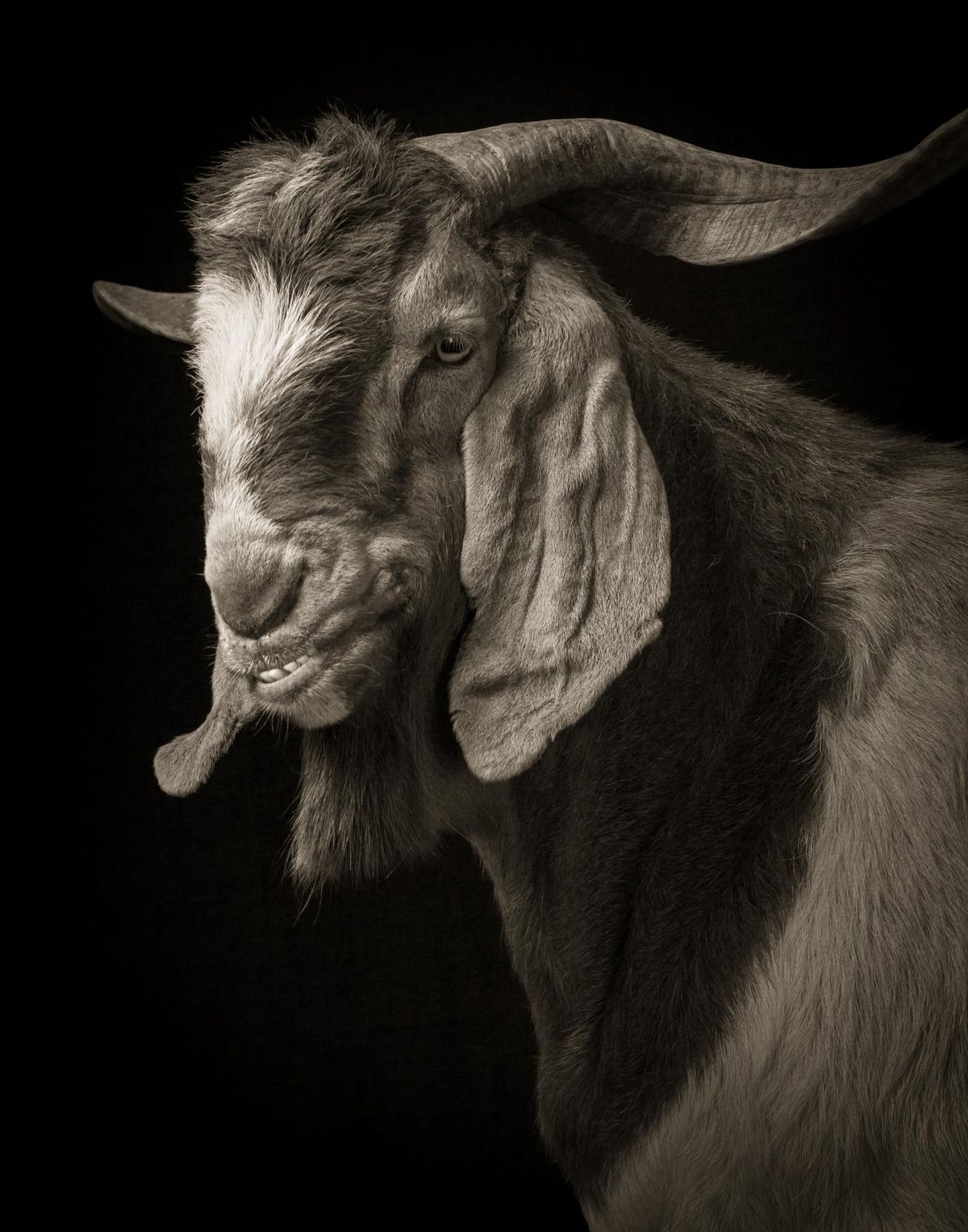Photographer Kevin Horan captures goats and sheep of Whidbey Island in new photo book

Jake is looking straight into the camera, giving viewers his best “Blue Steel” impression, while Lizzie, Xantippe and Sherlock, covered in curls, look placidly to one side.
Stanwood stares straight ahead, two teeth protruding over his top lip, and Sydney gazes off camera, her curly-haired body taking up much of the frame.
These aren’t your typical models, and these aren’t your typical portraits.
Jake, Lizzie, Xantippe, Sherlock, Stanwood and Sydney are among the animals featured in photographer Kevin Horan’s “Goats and Sheep: A Portrait Farm.”
The book brings Horan to the Art Spirit Gallery on Saturday for a book launch, reading and art exhibit.

Horan, whose work has appeared in the New York Times Magazine, Smithsonian, LIFE, U.S. News & World Report and National Geographic, moved to Whidbey Island from Chicago in 2006 and was immediately taken with the goats and sheep that became his neighbors.
“They were, to my eye, an undifferentiated bunch but these voices clued me that they were individual,” he said. “I don’t know exactly where that concept came from, but I thought ‘Oh boy, I ought to do portraits of them’… I’ll be honest, I guess I thought it would be funny but it turned out to be a little bit more.”
Horan’s first subjects were going to be neighboring sheep herd, but they “scattered like flies” as soon as he approached.
So Horan contacted a woman who was starting a goat cheese dairy. He told her what he hoped to do and, to his surprise, she agreed to have him over.
The goats were milked twice a day and were therefore used to being led here and there. The dairy owner helped get each animal in front of the camera, and Horan began making portraits.
“Several of those pictures from that very first day are still in the collection because they just clicked,” Horan said.
Horan also visits New Moon Farm Sanctuary in Arlington, Washington, once or twice a year to photograph the goats.
When considering which animals to photograph, Horan likens his process to people-watching. He looks for the most interesting look or face, which is why, he said, there aren’t any photos of baby animals in his collection.
“Your reaction to that is pretty much pre-programmed,” he said. “Everyone has an automatic ‘Aww’ reaction, so just as with humans, if someone’s got a little history, then they’ve got a face that reports that.”
“A recovering photojournalist,” Horan said a few previous assignments prepared him to photograph goats and sheep.
Before the magazine become primarily celebrity-focused, Horan photographed animal stories for People.
And during a project called “Street Census” in Chicago, Horan and his team conducted neighborhood surveys by setting up in one of a dozen different neighborhoods and photographing the people who walked by.
“It was, in a way, similar,” he said. “It was a way to see people by their exteriors and get a hint of their interiors … But in a way, it was analogous. It was all about the fun of people watching.”
Over the years, Horan has picked up a few tips for photographing animals, likening the experience to photographing children.
Trying to coerce them will only go sideways, he said, so it’s best to bring treats and be patient and observant.
Horan shoots with strobes, so what might look like a pose is really a captured instant.
“We as the viewer, we take from that gesture and ascribe meaning to it,” he said. “They have those looks. That’s the three-way collaboration in any portrait between the subject, the portraitist and the viewer. We all agree on what gestures mean.”
“Goats and Sheep: A Portrait Farm,” which was released in March and features an essay by Elena Passarello (“Let Me Clear My Throat,” “Animals Strike Curious Poses”), began to take shape after Horan received a call from Milan, Italy-based art book publisher 5 Continents Editions.
Horan was in the early stages of releasing a book through an American publisher, but 5 Continents Editions director Eric Ghysels was so passionate about the project, Horan decided to release “Goats and Sheep” with him.
Thus far, Horan has gotten positive reactions to the portraits, especially from those who are goat or sheep people, though others enjoy the work because of the portraiture.
Horan has since expanded his animal portraiture repertoire to include pigs (http://kevinhoran.com/chattel-pigs) and he would like to photograph primates too.
Horan isn’t interested in photographing dogs and cats because they’re “too familiar,” and he tried horse portraiture but didn’t feel like those portraits translated as well as his goat and sheep photos.
But no matter what animal he’s photographing, Horan hopes his photos help to change viewers’ perceptions of all animals.
“It was more trying to understand that the way you see the world is not the only way,” he said. “That every creature has its own world view, and you’ll never know what it’s like to experience the world as a bat or your dog, as one of these goats. That’s the underlying impulse is to expand our appreciation of all the other consciousnesses out there.”